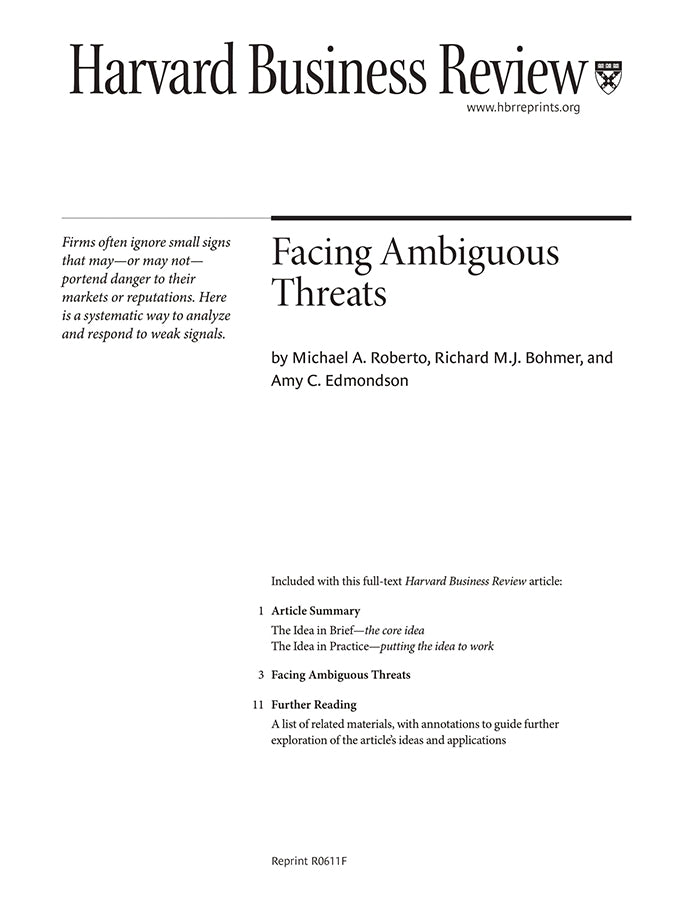Facing Ambiguous Threats
受取状況を読み込めませんでした
This article includes a one-page preview that quickly summarizes the key ideas and provides an overview of how the concepts work in practice along with suggestions for further reading. On February 1, 2003, the world watched in horror as the Columbia space shuttle broke apart while reentering the earth's atmosphere, killing all seven astronauts. Some have argued that NASA's failure to respond with appropriate intensity to the so-called foam strike that led to the accident was evidence of irresponsible or incompetent management. The authors' research, however, suggests that NASA was exhibiting a natural, albeit unfortunate, pattern of behavior common in many organizations. The foam strike is a prime example of what the authors call an ambiguous threat--a signal that may or may not portend future harm. Ambiguous threats differ from threats with obvious causes--say, a fire in the building--for which the response is clear. They also differ from unmistakable threats that may lack straightforward response paths (such as the frightening oxygen-tank explosion aboard Apollo 13). However, when the warning sign is ambiguous and the threat's potential effect is unclear, managers may choose to ignore or discount the risk. Such an approach can be catastrophic. Firms that do a good job of dealing with ambiguous threats do not improvise during a crisis; rather, they apply a rigorous set of detection and response capabilities that they have developed and practiced beforehand. In this article, the authors outline how to put such capabilities in place long before a crisis strikes. First, companies need to hone their teamwork and rapid problem-solving skills through practice. Second, they must learn to recognize weak signals, amplify the threat, and encourage employees to ask disconcerting "what if" questions in a safe environment. Finally, they should explore possible responses to threats through quick, low-cost experimentation.
【書誌情報】
ページ数:16ページ
サイズ:A4
商品番号:HBSP-R0611F
発行日:2006/11/1
登録日:2012/3/28


